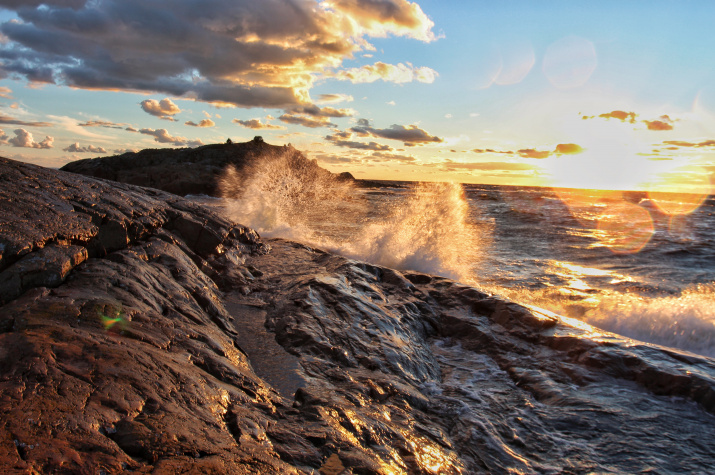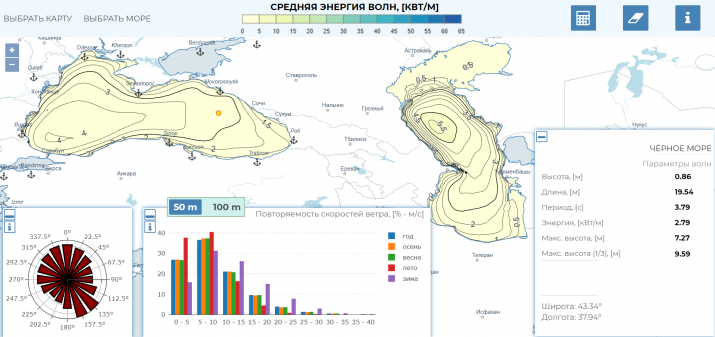Scientists of the Faculty of Geography of Lomonosov Moscow State University published an open access web atlas of the available wave and wind power of the Russian seas. The project was implemented with grant support from the Russian Geographical Society. You can get acquainted with the atlas here.
The new atlas contains data on the spatial distribution of wave and wind power in the Sea of Japan, the Sea of Azov, the Sea of Okhotsk, as well as in the Black, Caspian, Baltic, Barents, Kara, and Bering Seas. It also contains information on the main parameters of wind waves. Users can estimate the average wave power of different seas of Russia, as well as the maximum wave height.
When compiling the atlas, the results of modeling wind wave parameters were used; and data on wind power was obtained on the basis of high-resolution reanalyses. All data is loaded into a special GIS framework, which allows you to visualize the necessary parameters via the Internet, changing the scale of the map using the mouse wheel.
“The main idea of creating a web atlas is to provide any interested users with the opportunity to estimate the amount of wave and wind power at the required point. For example, if you want to place a power plant on the coast, the materials of the web atlas will help you choose a place where wind and wave power are sufficient, but the biggest waves will not destroy your plant. Already now, using our web atlas, you can design various combinations of wind and wave hybrid generators," said a senior researcher at the Department of Oceanology, Faculty of Geography at Moscow State University, coordinator of the project for creating the web atlas, Stanislav Myslenkov.
Currently, scientists continue to expand the database and develop a cartographic web interface. This will make the web atlas even more user-friendly and simplify access to downloaded information, help visualize wave and wind parameters, calculate basic statistical characteristics, build graphs and charts.



